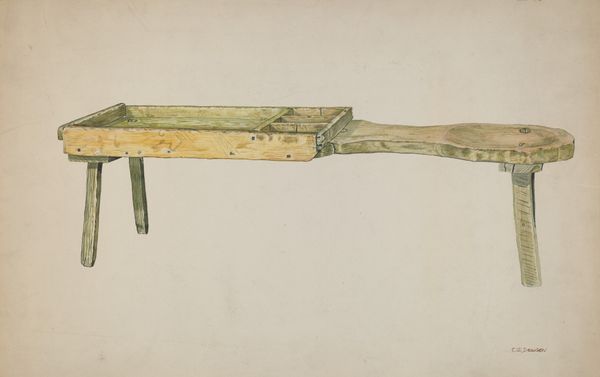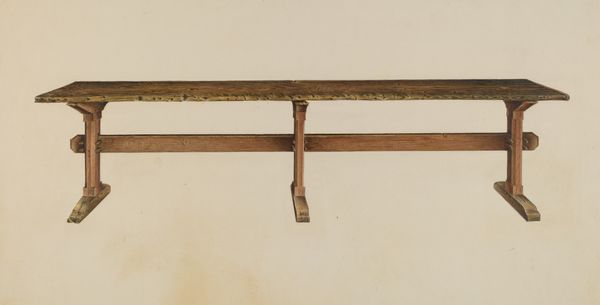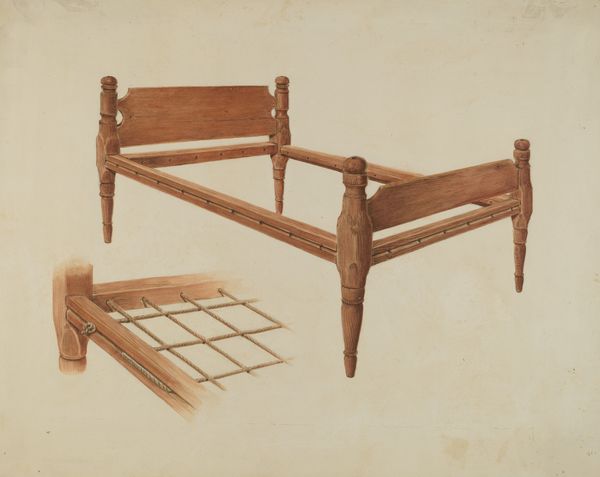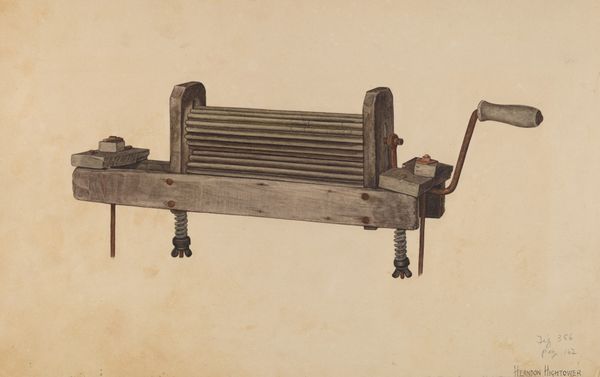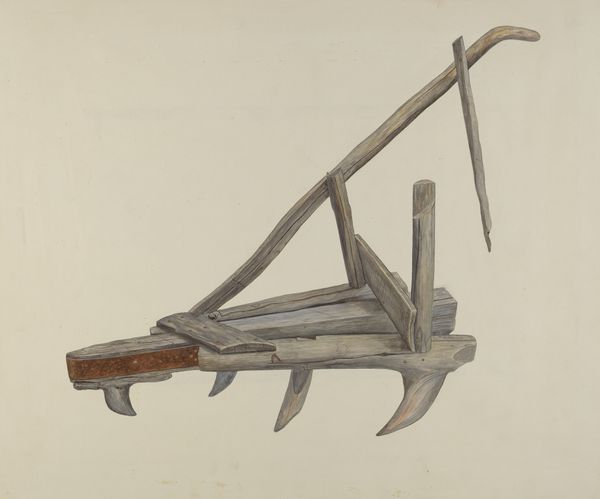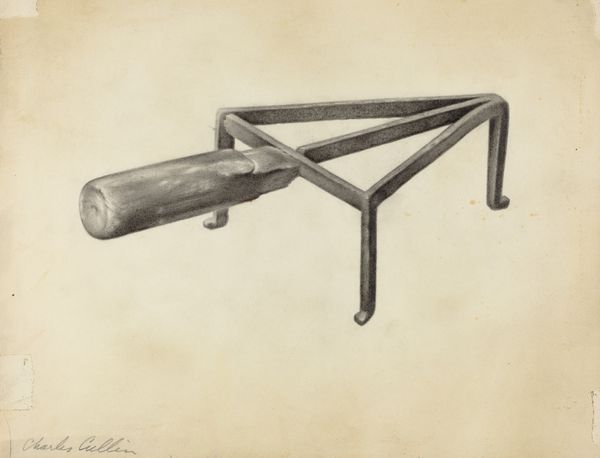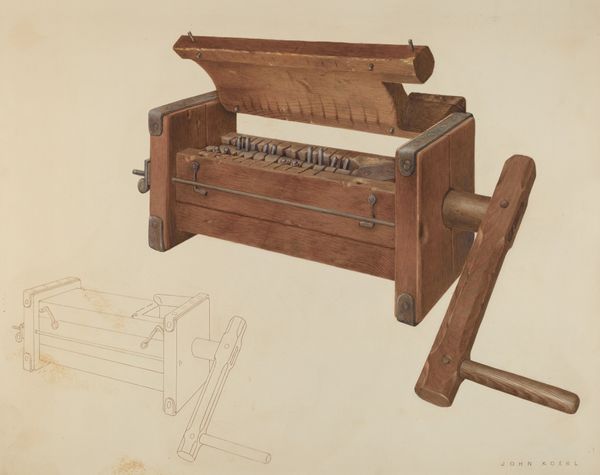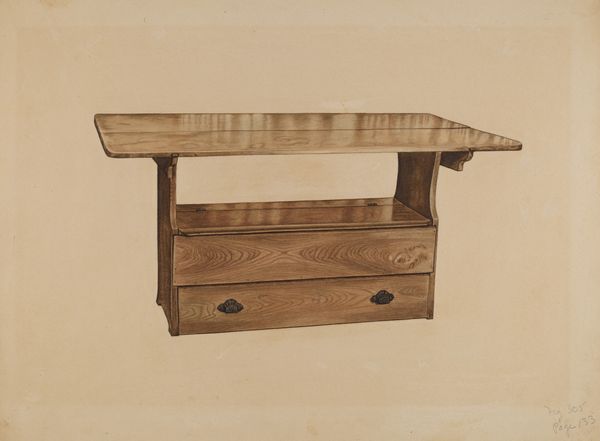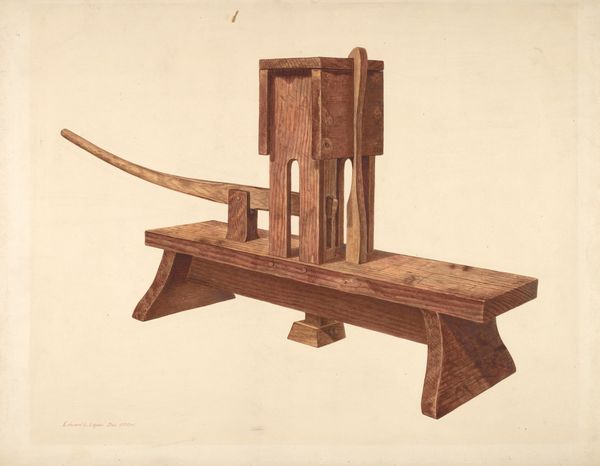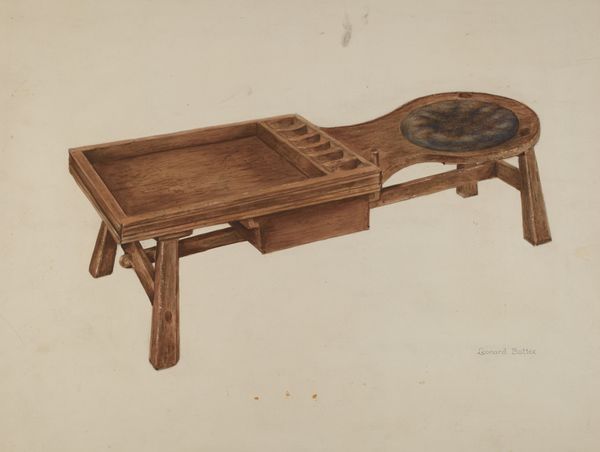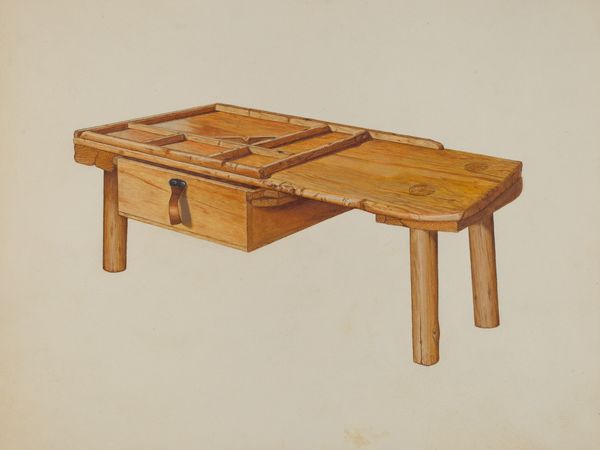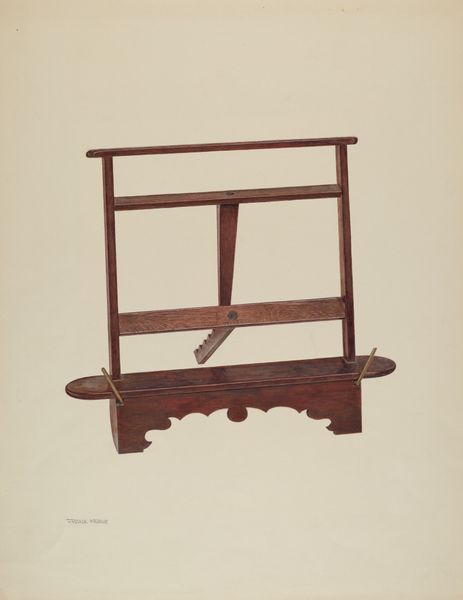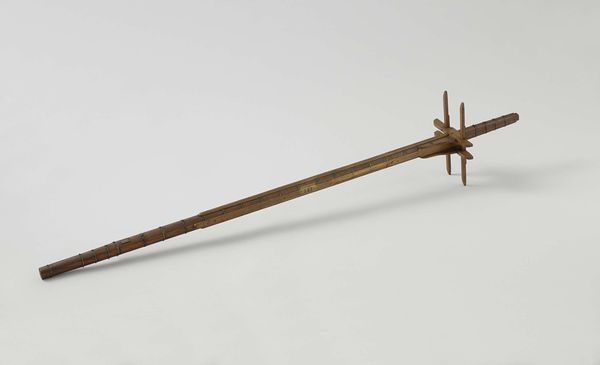
drawing, watercolor
#
drawing
#
water colours
#
oil painting
#
watercolor
#
watercolour illustration
#
modernism
#
watercolor
#
realism
Dimensions: overall: 35 x 43 cm (13 3/4 x 16 15/16 in.)
Copyright: National Gallery of Art: CC0 1.0
Curator: This watercolor piece from around 1939, titled "Jeweler's Wire Making Machine," comes to us from the artist Al Curry. There’s a quiet precision to it, wouldn't you agree? Editor: Absolutely, but it strikes me as melancholic. The detailed rendering of this workbench somehow emphasizes the absence of the jeweler, the hands that would operate it. It speaks to lost craft, maybe? Curator: I think there's a longing for an older way of life embedded here. In art of this period, the machine itself can stand as a symbol. Does it represent progress, or the slow disappearance of individual skill? It’s more complex than just nostalgia, I think. Editor: I agree, it feels deliberate, the placement of each tool hinting at its function and the sequence of actions. It's an artifact carefully laid out, almost reverentially. The muted tones further the air of stillness. I notice the subtle oil painting textures, it appears to attempt realism through material juxtaposition. Curator: Consider the social and historical context of its creation. This piece was made during a period of enormous transition, just before World War II. The image invites the question: who owned this? Who used it, and for what purpose? Were they perhaps moving into industry or mass production instead of unique wares? Editor: The cross shape formed by the upper mechanism stands out as well. Beyond mere woodworking functionality, its likeness creates a familiar cultural sign. Even without an intended religious reading, there’s a feeling of inherited value that underscores the work's importance. Curator: And it’s interesting how Curry chooses watercolor for this. One wouldn't necessarily expect that medium for an industrial subject. Perhaps watercolor offered a level of softness and intimacy, helping him portray not just the machine, but also an atmosphere and set of associations that are specific to his artistic voice. Editor: Right, seeing such an old piece gives one perspective, how something seemingly mundane, or even archaic in some lights, can be elevated to hold multiple layers of societal information and personal memory. I find it quite moving. Curator: Indeed. A simple machine rendered in watercolour tells a larger story about labor, tradition, and transformation, reflecting our complex relationship with craft and mechanization.
Comments
No comments
Be the first to comment and join the conversation on the ultimate creative platform.
